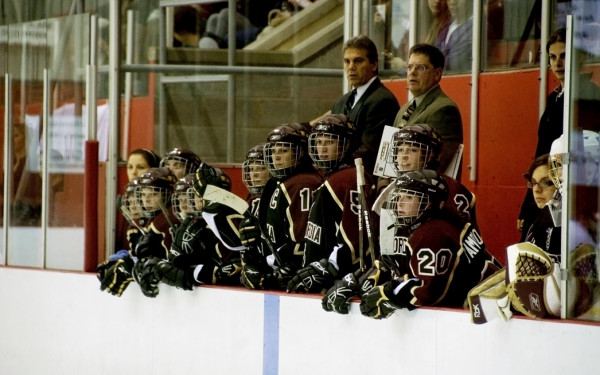Women in Science Make the Unseen Seen
eXXpedition Crew Researches Toxins on a Sailboat
How do you make the unseen seen? If you’re the team behind eXXpedition, you put it on a boat off the coast of South America, with a crew of female scientists, filmmakers and policymakers.
“Our biggest tool is communication,” explained Montrealer and eXXpedition Amazon 2015 crew member, Rachel Labbe Bellas. “It’s really about dialogue.”
She will be one of the 14 women aboard the S.V. Sea Dragon, sailing from Brazil to Guyana on a 19-day trek to study the pollutants and plastics that litter our oceans. As a marine biologist by profession from Montreal and fish-out-of-water by nature, Bellas will become an advocate for, as eXXpedition describes, “making the unseen seen.”
As the city of Montreal authorized its dump of billions of litres of untreated sewage into the St. Lawrence River, Bellas’s opinion is understandable. Outcry against the dumping has crossed borders, spanning continents, with international media calling attention to the controversial solution to one of Montreal’s many infrastructure problems. The result: increased awareness about the harm of allowing waste to flow freely in the waters that surround us—even if the city suggests that the ecological impact will be minimal, if any.
Bellas and her team have their focus set on something much smaller than the condoms found floating along Montreal shores—think plastic microbeads, and then think smaller.
She is one of the three professional scientists on board who will be pulling water samples throughout their sail. eXXpedition’s website explains that the samples will allow them to analyze and better understand the contaminants that have made their way into the ocean, forming gyres and integrating themselves into ecosystems around the globe. They have partnered with eight research groups and three universities worldwide who will help with the analysis of samples collected during the 19 days.
The all-female crew will also practice eXXpedition’s mandate by looking within—literally. The team will examine the presumed link between plastics, contaminants and human health by drawing and analyzing their own blood. Their website explains that, “scientists estimate that everyone alive today carries at least 700 contaminants within our bodies.” Their goal is to test personal exposure to known toxins. Specifically, they aim to explore “the level of toxic exposure in women.”
There’s the plastic seal on a plastic yogurt container, the plastic contact lens case, the plastic wrapping around a head of lettuce; it’s everywhere.
“It’s become a part of our lives,” said Bellas. She explained that growing research is linking toxins found in plastic waste with disease, citing BPA and breast cancer as an example.
Bisphenol A, more popularly known as BPA, is a chemical commonly used in the making of plastics and resins, often found in food containers. Research in the past decade has identified BPA as an endocrine disruptor. According to the Canadian Cancer Society, endocrine disruptors mimic or disrupt natural hormones.
In the case of BPA, the chemical—which one study found was present in 93 per cent of the subject’s urine samples— affects estrogen production, which can have negative effects on breast tissue development. These effects are what some, including those behind a 2014 study from Tufts University in Maryland and the University of Idaho, assume lead to an increased risk of breast cancer.
“Synthetic things have injected themselves into our lives and integrated [themselves] into our genetics,” explained Bellas. She continued to discuss that extra care is needed to understand and mitigate the risks—risks that she hopes to educate people about.
“I was never able to link my profession to my friends, my society,” she said. “This expedition has let me do that.” Before applying to take part in the trip, Bellas was unable to see the correlation between her work as a marine biologist and ecotoxicology, the basis of the research that will be done.
“I didn’t look at this as an issue I could be involved in,” she said.
Even further, Bellas sees this as an opportunity to build a network of courageous, brave women in a typically male-dominated field. She said that this trip is bringing together “women in adventurous fields that otherwise wouldn’t be recognized.” eXXpedition—aptly named with reference to the two X female sex chromosomes—aims to highlight the work of the “unseen women” in science, technology, engineering and math education.
They hope to “break down stereotypes, and also harness the power within them.”
“You do feel alone sometimes,” Bellas said about being a woman in sciences. eXXpedition changes that dynamic.
The female presence is increasingly important due to their stake in the matter, Bellas said.
“We have a stronger voice because it’s our bodies,” she said. “Women need to take charge.”
While links between toxins found in bodies of water and disease are still preliminary, Bellas encourages all to take a second look at the products we’re bringing into our households.
“It made me realize how [many] toxic things I have in my own home,” she said. “At the end of the day, it comes back to us.”
For more information on ecotoxicology and materials to steer clear of, Bellas recommends 5gyres.org and EWG.org.

WEB_900_603_90.jpg)
_600_832_s.png)


_(1)__600_375_90_s_c1.jpg)
__600_375_90_s_c1.jpg)
_(1)__600_375_90_s_c1.jpg)